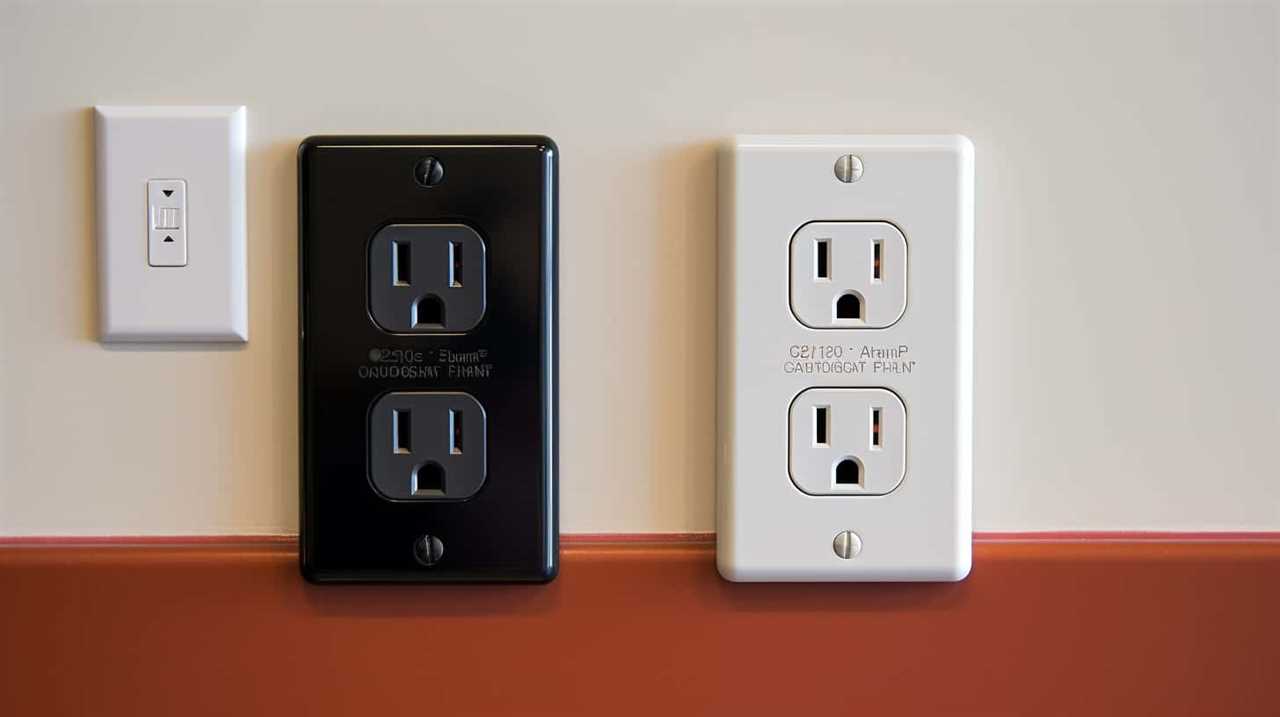Imagine a scenario in which our electric devices not only simplify our lives, but also emit a dangerous gas. Is it true that electric appliances can actually release carbon monoxide? In this article, we dispel this misconception and present you with the truth.
We’ll explore the science behind carbon monoxide production, common sources, and the importance of proper installation and maintenance.
Stay informed, stay safe, and let’s dive into the truth about electric appliances and carbon monoxide.
Key Takeaways
- Electric appliances themselves do not produce carbon monoxide.
- Carbon monoxide can be indirectly produced by electric appliances if they are powered by carbon-based fuels.
- Gas-powered generators used indoors can release carbon monoxide.
- Regular maintenance and proper usage guidelines are essential for the safe operation of electric appliances.
What Is Carbon Monoxide
Carbon monoxide is a highly toxic gas that’s produced by the incomplete combustion of carbon-based fuels. It’s crucial to be aware of the dangers associated with electric appliances and the health risks of carbon monoxide.
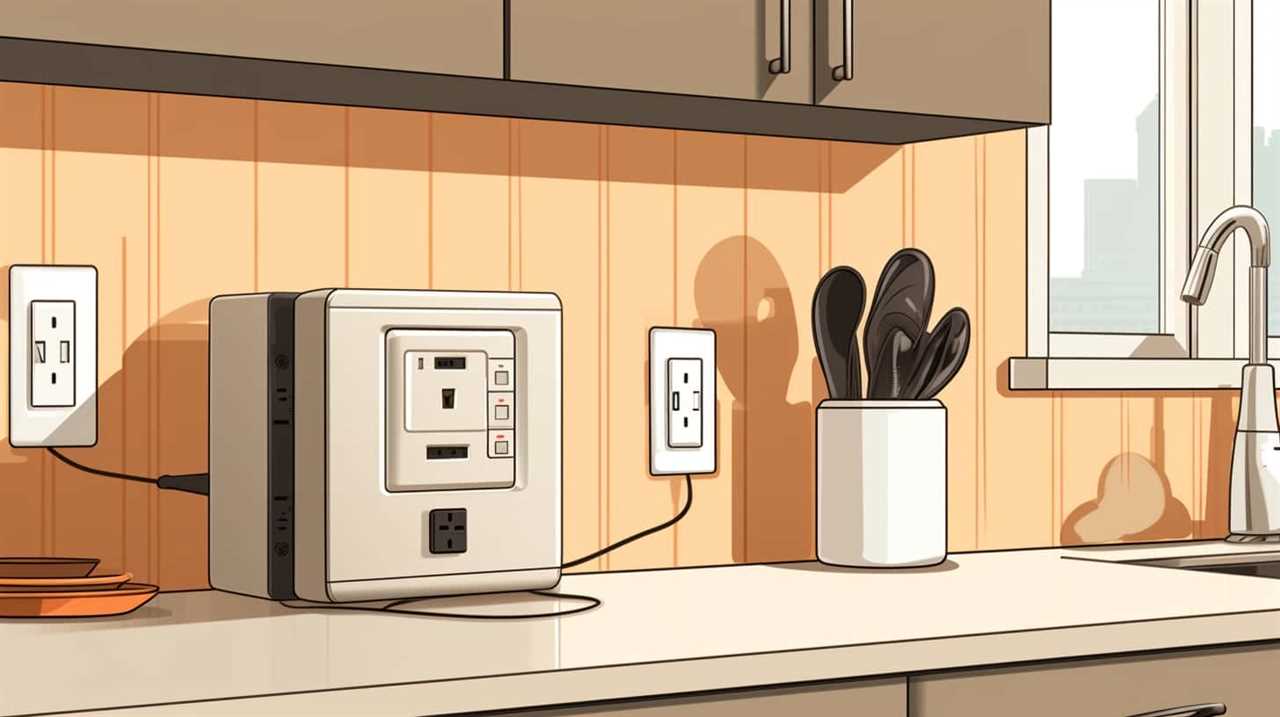
While electric appliances themselves don’t produce carbon monoxide, they can indirectly contribute to its presence if they’re powered by carbon-based fuels, such as natural gas or propane. For example, if a gas-powered generator is used indoors during a power outage, it can release carbon monoxide, posing a serious health risk.
Understanding the potential dangers and health risks of carbon monoxide is essential for ensuring the safety of ourselves and our loved ones. Now, let’s delve into an understanding of electric appliances and their role in this context.
Understanding Electric Appliances
While electric appliances themselves don’t produce carbon monoxide, it’s important to understand their role in the context of carbon monoxide emissions. Electric appliance safety plays a crucial role in preventing any potential dangers related to carbon monoxide.
Here are five key points to help you understand electric appliances better:
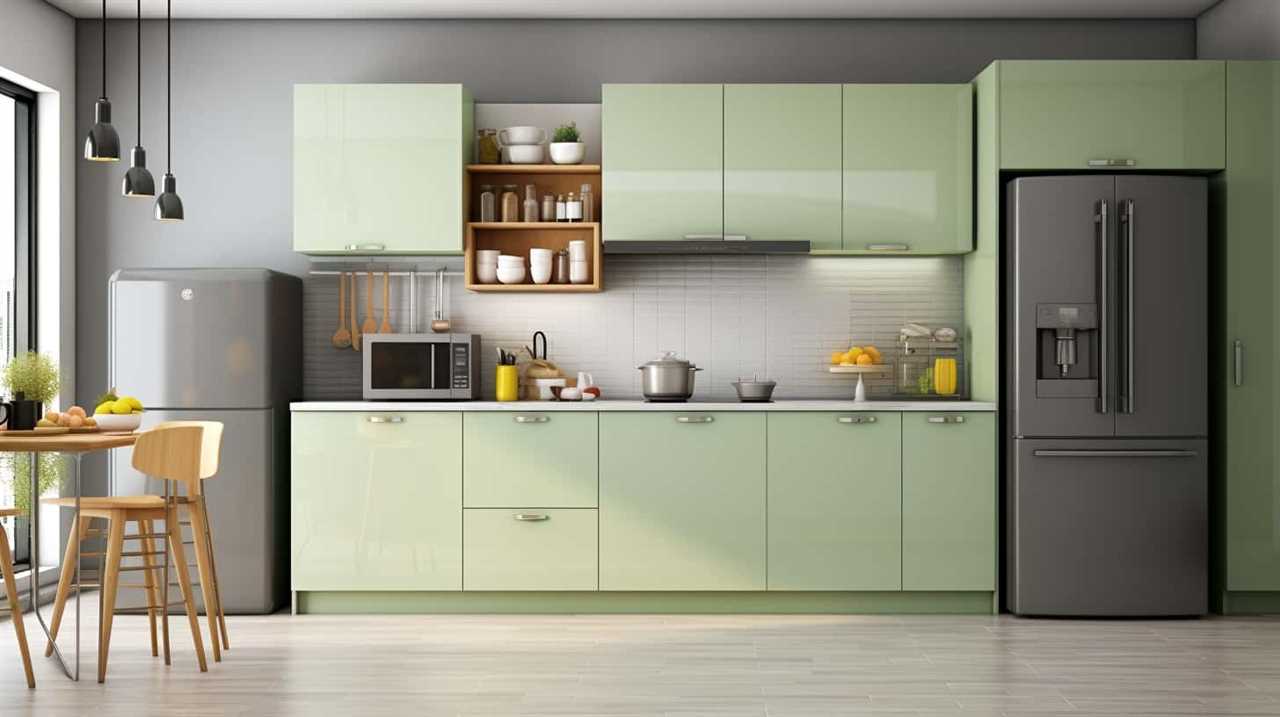
- Regular maintenance: Proper maintenance ensures that electric appliances operate efficiently and safely, reducing the risk of carbon monoxide leaks.
- Ventilation: Adequate ventilation is important to prevent the buildup of carbon monoxide, especially in enclosed spaces where electric appliances are used.
- Energy efficiency: Energy-efficient electric appliances consume less energy, reducing the overall carbon emissions associated with electricity generation.
- Carbon footprint: Choosing electric appliances with lower carbon footprints helps minimize environmental impact and promotes sustainability.
- Safety features: Many modern electric appliances come equipped with safety features, such as automatic shut-off mechanisms, to provide an extra layer of protection against potential hazards.
Understanding these aspects of electric appliances will help you make informed choices and ensure a safer and more energy-efficient environment.
The Science Behind Carbon Monoxide Production
Now let’s explore the science behind carbon monoxide production in electric appliances.
It’s important to understand that while electric appliances themselves don’t produce carbon monoxide, certain malfunctions or improper usage can lead to its production.
Carbon monoxide is typically generated when there’s incomplete combustion of a fuel source, such as natural gas or propane, which can occur in appliances like gas water heaters or furnaces.
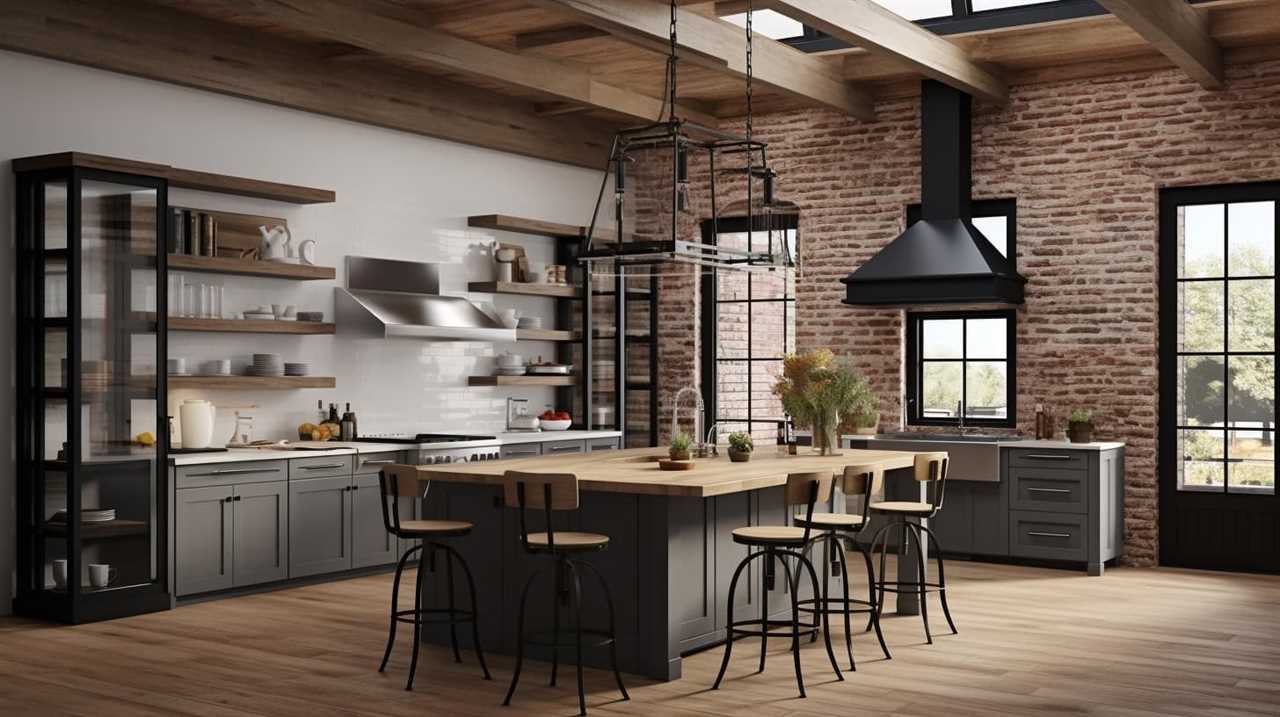
Electric Appliances and CO
Electric appliances don’t produce carbon monoxide as they run on electricity rather than combustion.
Here are some key points to help you understand the safety of electric appliances and how they relate to carbon monoxide:
- Electric appliances, such as refrigerators, televisions, and computers, don’t produce carbon monoxide because they don’t burn fuel.
- Carbon monoxide is primarily produced by appliances that burn fuel, like gas stoves, furnaces, and generators.
- It’s still important to be cautious with electric appliances, as they can pose other safety risks like electrical shocks or fires.
- To ensure your safety, it’s crucial to follow proper maintenance and usage guidelines provided by the manufacturers of your electric appliances.
- Additionally, it’s recommended to install carbon monoxide detectors in your home, even if you primarily use electric appliances, as they can detect any potential carbon monoxide leaks from other sources.
How Is CO Produced?
To understand how carbon monoxide (CO) is produced, it’s important to recognize that this toxic gas is generated when fuels are incompletely burned, such as in the case of gas stoves or furnaces. When the combustion process is incomplete, carbon in the fuel combines with oxygen to form CO instead of carbon dioxide (CO2). This occurs when there’s insufficient oxygen available for complete combustion.
Factors that contribute to incomplete combustion include inadequate ventilation, blocked flues, or malfunctioning appliances. It’s crucial to ensure proper ventilation and maintenance of gas appliances to minimize the risk of CO production.
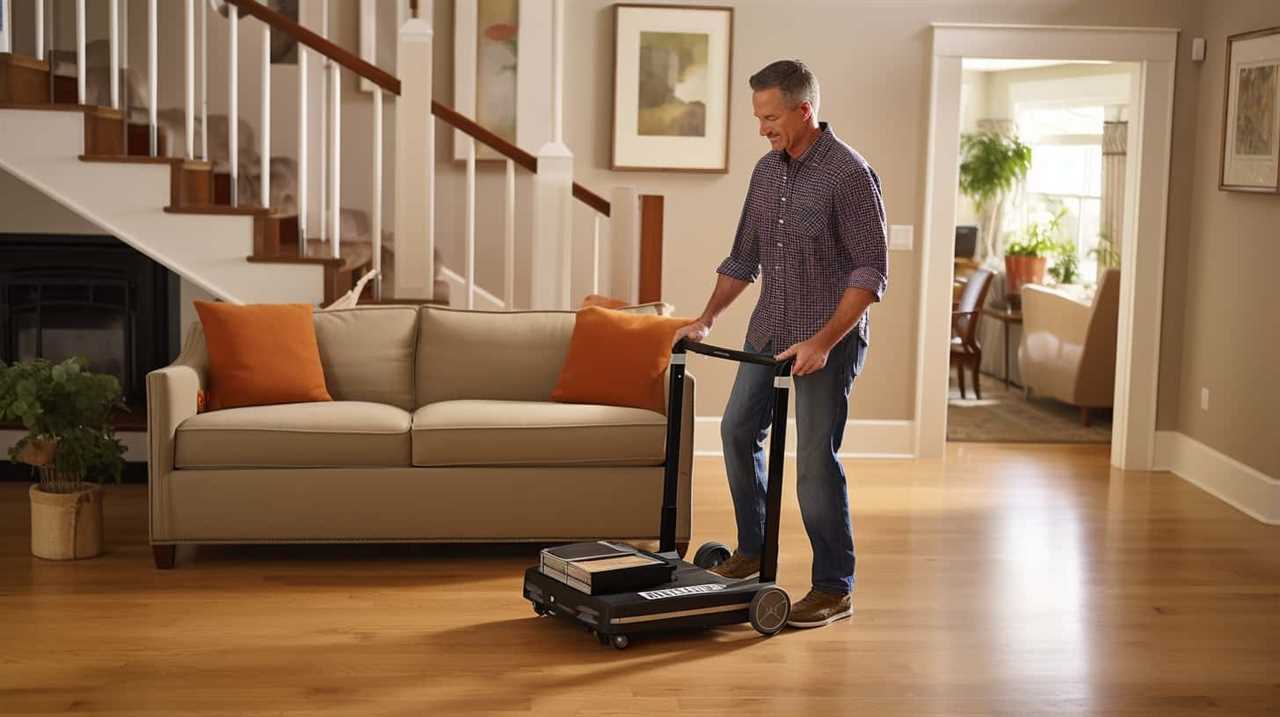
Understanding the science behind carbon monoxide production allows us to take appropriate measures to prevent its harmful effects.
Common Sources of Carbon Monoxide
One of the most common sources of carbon monoxide is the incomplete combustion of fossil fuels. This occurs when fuels such as gasoline, natural gas, coal, and propane don’t burn completely, releasing carbon monoxide into the air.
To help you better understand the common sources of carbon monoxide, here are five important points to consider:
- Faulty or malfunctioning fuel-burning appliances, such as furnaces, water heaters, and stoves, can produce carbon monoxide.
- Using gas-powered generators or grills indoors, or in poorly ventilated areas, can lead to carbon monoxide buildup.
- Blocked or damaged chimneys and vents can cause carbon monoxide to accumulate inside buildings.
- Idling cars in enclosed spaces, such as garages, can result in the release of carbon monoxide.
- Tobacco smoke contains carbon monoxide, which can be harmful to those exposed.
To protect yourself and your loved ones from carbon monoxide poisoning, it’s essential to have carbon monoxide detectors installed in your home. These devices can provide an early warning if carbon monoxide levels become hazardous, allowing you to take appropriate action and ensure everyone’s safety.
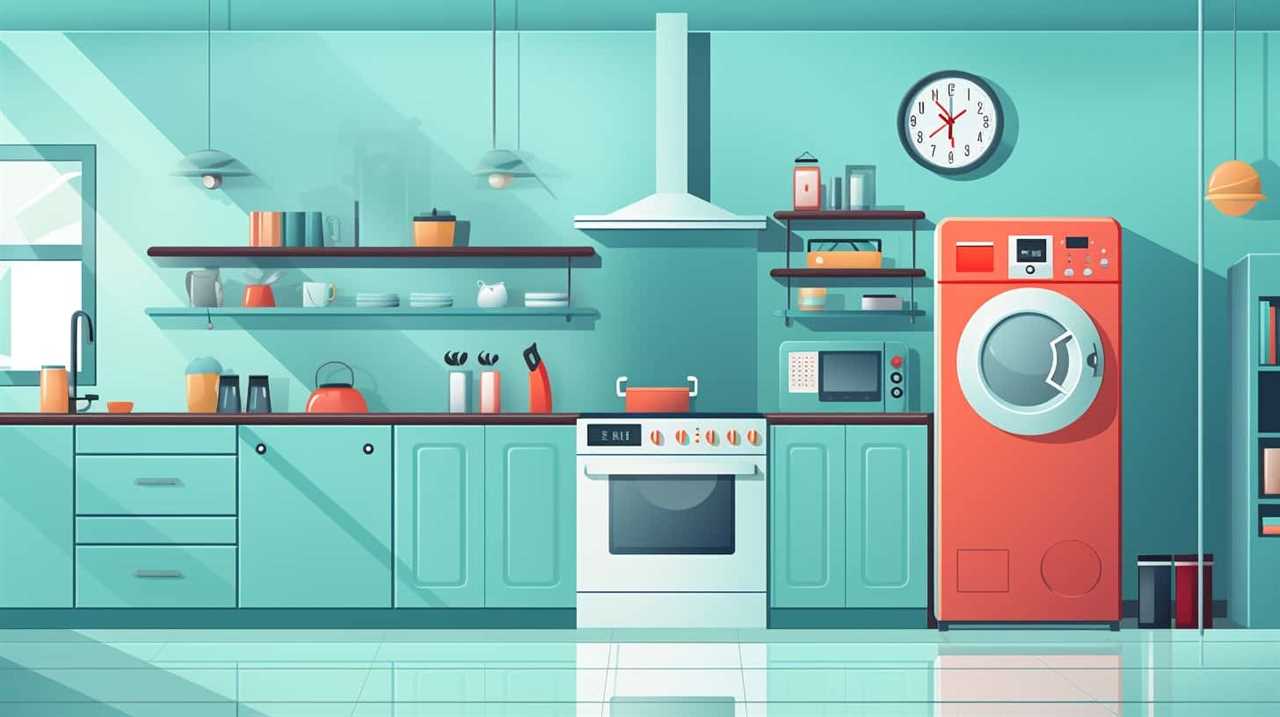
Debunking the Myth: Can Electric Appliances Produce Carbon Monoxide
Let’s set the record straight: electric appliances don’t produce carbon monoxide.
This is a common myth that needs to be debunked.
Unlike appliances that burn fuels like gas or oil, electric appliances operate without combustion, making them safe from carbon monoxide emissions.
Electric Appliances Carbon Monoxide
We will debunk the myth that electric appliances can produce carbon monoxide. Contrary to popular belief, electric appliances don’t produce carbon monoxide. Here are some key points to consider:

- Electric appliances, such as stoves, ovens, and heaters, don’t burn fuel and therefore don’t produce carbon monoxide.
- Carbon monoxide is a byproduct of incomplete combustion, typically from burning fossil fuels like gas or coal.
It’s important to ensure the safety of electric appliances by following proper maintenance and usage guidelines.
- Although electric appliances don’t produce carbon monoxide, it’s still crucial to have carbon monoxide detectors installed in your home.
- Carbon monoxide detectors can alert you if there are any other potential sources of carbon monoxide in your home, such as gas-powered appliances or a malfunctioning furnace.
Myth Debunked: Electric Appliances
Now, let’s dive deeper into the myth surrounding electric appliances and their ability to produce carbon monoxide.
It’s important to debunk this myth and provide accurate information to prevent any confusion or potential dangers. The truth is, electric appliances don’t produce carbon monoxide. Unlike gas-powered appliances, which can emit this potentially deadly gas, electric appliances operate without combustion. This means that they don’t release carbon monoxide as a byproduct.
However, it’s still crucial to have carbon monoxide detectors installed in your home, even if you only use electric appliances. These detectors are essential for carbon monoxide poisoning prevention, as they can alert you to any potential leaks or dangers.
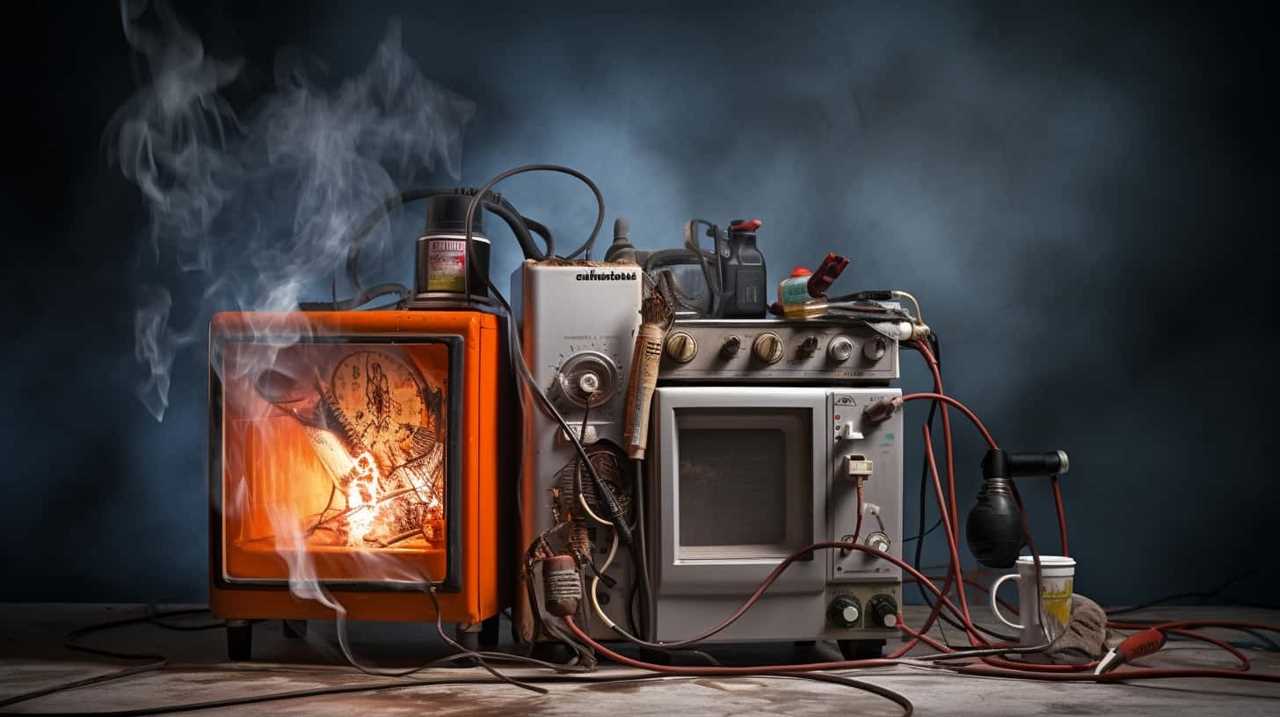
With that said, let’s now move on to the next section, which discusses the importance of proper installation and maintenance.
The Importance of Proper Installation and Maintenance
Properly installing and maintaining electric appliances is essential in preventing the production of carbon monoxide. Here are five important considerations to keep in mind:
- Ensure proper ventilation: Adequate airflow around the appliance helps prevent the buildup of carbon monoxide.
- Follow manufacturer’s instructions: Installing an electric appliance correctly is crucial to its safe operation.
- Regularly inspect and clean: Dust, debris, and other obstructions can interfere with the appliance’s function and increase the risk of carbon monoxide production.
- Schedule annual maintenance: Professional inspections can identify potential issues and address them before they become hazards.
- Install carbon monoxide detectors: These devices are essential in detecting the presence of carbon monoxide and issuing timely alerts, ensuring the safety of your household.
By adhering to these guidelines, you can minimize the risks associated with electric appliance hazards and enhance the safety of your home.
Warning Signs and Symptoms of Carbon Monoxide Poisoning
As homeowners, it is crucial for us to be aware of the warning signs and symptoms of carbon monoxide poisoning. Carbon monoxide (CO) is a colorless, odorless gas that can be produced by faulty electric appliances, posing a serious risk to our health and safety. Recognizing the warning signs and symptoms of carbon monoxide poisoning is vital in order to take immediate action and prevent further harm. Here are some common warning signs and symptoms to watch out for:
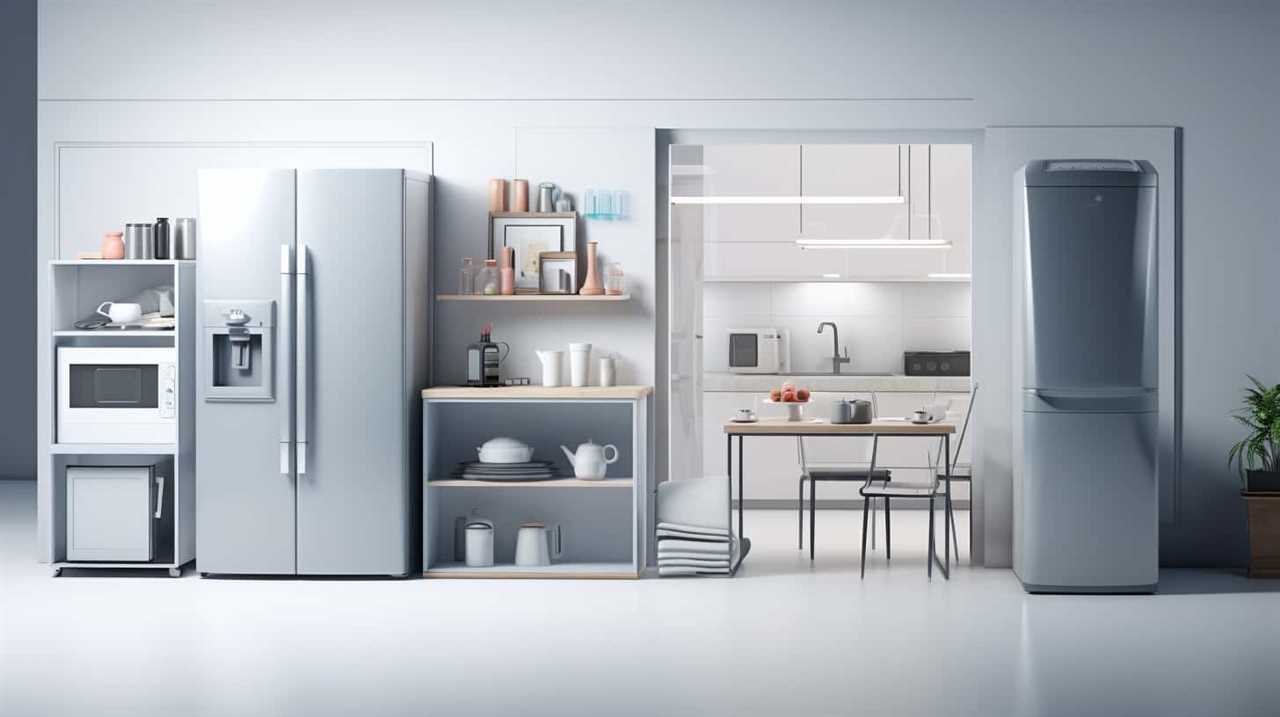
| Warning Signs | Symptoms |
|---|---|
| Yellow or flickering gas burner flames | Headache |
| Sooty stains around appliances or vents | Dizziness |
| Excessive condensation on windows | Nausea |
If you experience any of these warning signs or symptoms, it is important to evacuate the premises immediately, seek fresh air, and contact emergency services. Remember, early detection and prompt action are key in preventing carbon monoxide poisoning. Stay vigilant and prioritize your safety when it comes to your electric appliances.
Safety Precautions and Best Practices
To ensure our safety, it’s imperative that we implement appropriate safety precautions and follow best practices when it comes to our electric appliances and carbon monoxide risk.
Here are some safety measures and best practices to consider:
- Regularly inspect and maintain your electric appliances to ensure they’re in good working condition.
- Install carbon monoxide detectors on each level of your home, especially near sleeping areas.
- Test your carbon monoxide detectors regularly to ensure they’re functioning properly.
- Avoid using portable fuel-burning devices indoors, as they can produce carbon monoxide.
- Never use electric appliances, such as stoves or ovens, as a source of heat.
By following these safety measures and utilizing CO detectors, we can significantly reduce the risk of carbon monoxide poisoning in our homes.
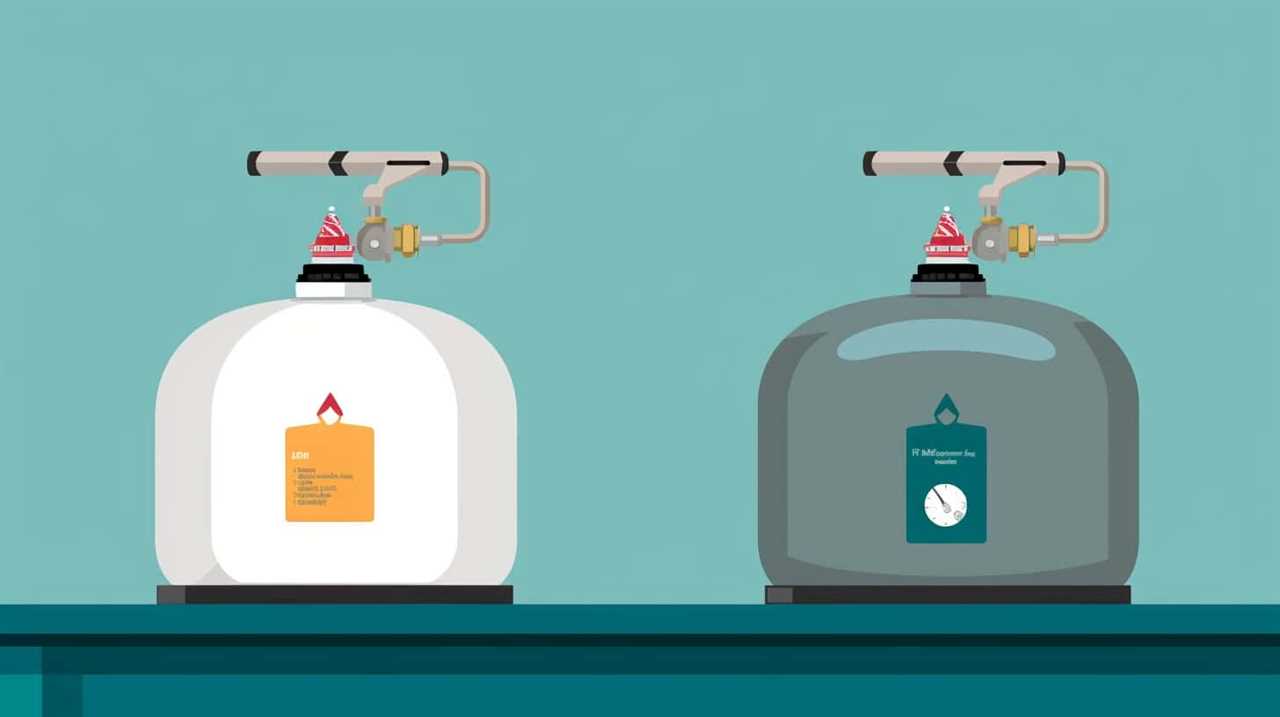
Frequently Asked Questions
Can Electric Appliances That Are Not Connected to a Fuel Source Still Produce Carbon Monoxide?
Electric appliances not connected to a fuel source cannot produce carbon monoxide. However, it’s crucial to prioritize electric appliance safety by regularly checking and maintaining them. Additionally, installing carbon monoxide detectors provides an added layer of protection.
Are There Any Specific Electric Appliances That Are Known to Produce Carbon Monoxide?
Electric appliances that produce carbon monoxide can pose a danger to homes. It is important to have carbon monoxide detection devices installed to ensure safety in homes with electric appliances.
How Can Carbon Monoxide Be Detected in a Home With Only Electric Appliances?
To detect carbon monoxide in a home relying solely on electric appliances, it is crucial to use detection methods such as carbon monoxide detectors. These devices are of utmost importance for ensuring safety and preventing CO poisoning.
Are There Any Safety Precautions That Should Be Taken With Electric Appliances to Prevent Carbon Monoxide Poisoning?
To prevent carbon monoxide poisoning from electric appliances, we should take safety precautions. Common symptoms of carbon monoxide poisoning should be watched out for. It is important to be aware and informed.

Can Faulty Electrical Wiring or Malfunctioning Electric Appliances Increase the Risk of Carbon Monoxide Production?
Electric appliances with faulty wiring can pose a higher risk of carbon monoxide production. Additionally, malfunctioning electric appliances emitting carbon monoxide can lead to health risks. It is crucial to prioritize safety and address any electrical issues promptly.
Conclusion
In conclusion, electric appliances don’t produce carbon monoxide, like a calm sea that doesn’t produce waves.
Understanding the science behind carbon monoxide production and the common sources is crucial for maintaining a safe environment. Proper installation and regular maintenance of appliances are essential to prevent any potential risks.
Recognizing the warning signs and symptoms of carbon monoxide poisoning and following safety precautions are key to ensuring the well-being of ourselves and our loved ones.
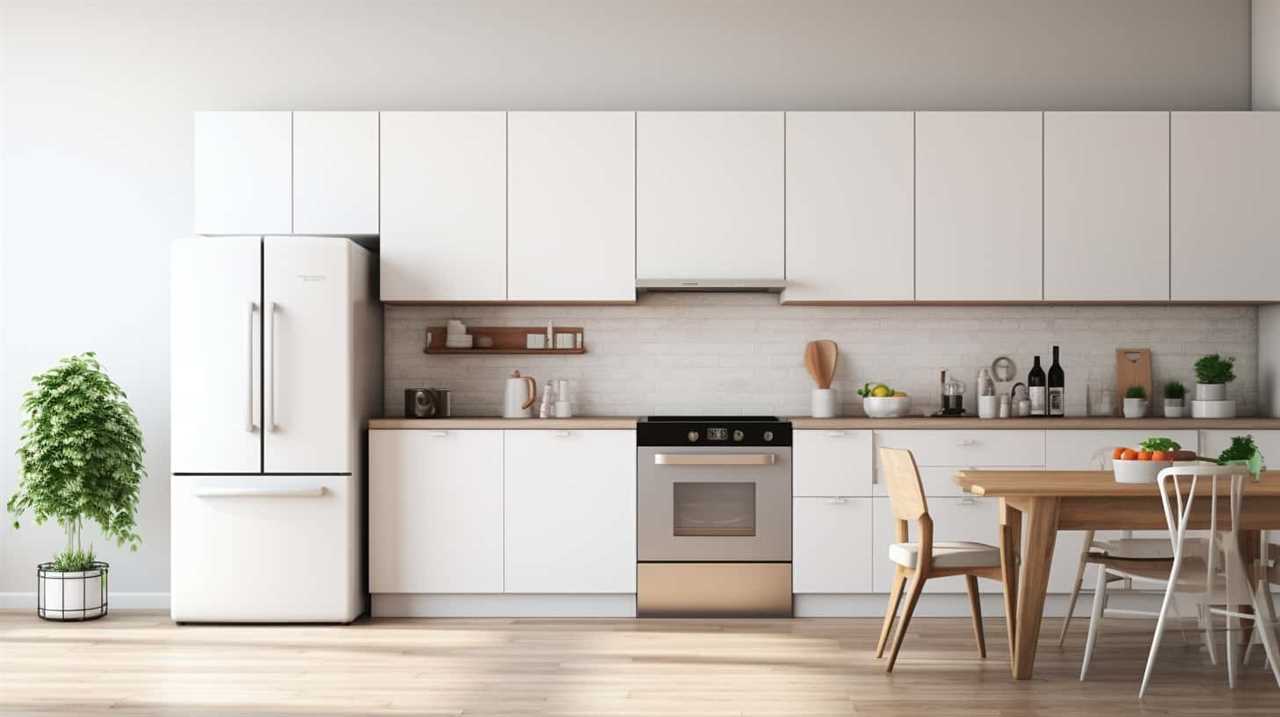
Stay informed and stay safe.




